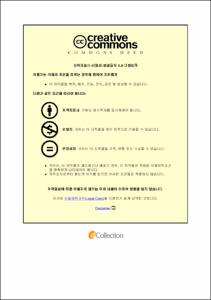3D프린팅 기반 의료영상 및 현실적인 재료물성 개선을 통한 이미징 팬텀, 교육용 및 리허설 팬텀 제작과 임상적용에 관한 연구
- Abstract
- With the development and popularization of three-dimensional (3D) printing technology, it is being used in various ways in the medical field to overcome the limitations of existing technology. 3D printing can be manufactured without restrictions on the shape, and small-scale production is possible. In particular, complex shapes with porosity were difficult to manufacture with conventional manufacturing methods, but 3D printing made it possible. In addition, due to the manufacturing characteristics of 3D printing, it is suitable for small-quantity production of various kinds. Therefore, in medicine, it is possible to produce patient-specific and disease-specific medical devices.
Medical 3D printing has the potential to transform the way doctors diagnose and treat patients by providing customized solutions for complex surgeries and medical procedures. With the use of advanced medical imaging techniques, such as CT and MRI scans, 3D printing can produce highly accurate and realistic models of patients' anatomy. These models can be used to plan and rehearse surgeries, design custom implants or prosthetics, and create medical devices that are tailored to the individual patient's needs.
One of the benefits of 3D printing in the medical field is the ability to create realistic, patient-specific, and reusable phantoms. These phantoms can be used for challenging surgeries that have a low frequency of occurrence, allowing surgeons to practice and perfect their techniques before performing the actual surgery. This can lead to better outcomes for patients and a higher level of confidence for surgeons. It can also be used to evaluate medical imaging software.
The development of a CT-based pediatric video thoracoscopic simulation phantom showed effects such as improving the accuracy of surgery and shortening the operation time through pre-operative rehearsal simulation for patients and surgeons in operations with high difficulty and low frequency. In addition, various Hounsfield units (HU) were implemented using medical imaging, 3D printing technology, and foamed silicone, and a chest phantom reflecting the pattern of the disease was fabricated and applied to quantification software evaluation. Lastly, the left atrial appendage occlusion rehearsal simulation phantom enabled more predictable and accurate surgery through pre-operative simulation.
In conclusion, medical imaging and 3D printing technologies realize highly customized technologies such as patient-specific and show new possibilities for innovative medical technologies. 3D printing technology improves the existing medical process to enable high-level medical care.
- Issued Date
- 2023
- Awarded Date
- 2023-08
- Type
- Dissertation
- Affiliation
- 울산대학교
- Department
- 일반대학원 의과학과 의공학전공
- Advisor
- 김남국
- Degree
- Doctor
- Publisher
- 울산대학교 일반대학원 의과학과 의공학전공
- Language
- eng
- Rights
- 울산대학교 논문은 저작권에 의해 보호 받습니다.
- Appears in Collections:
- Mechanical Engineering > 2. Theses (Ph.D)
- 파일 목록
-
-
Download
 200000687473.pdf
기타 데이터 / 1.89 MB / Adobe PDF
200000687473.pdf
기타 데이터 / 1.89 MB / Adobe PDF
-
Items in Repository are protected by copyright, with all rights reserved, unless otherwise indicated.